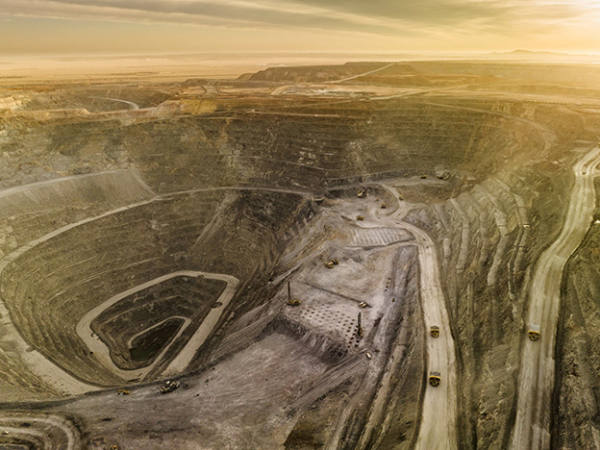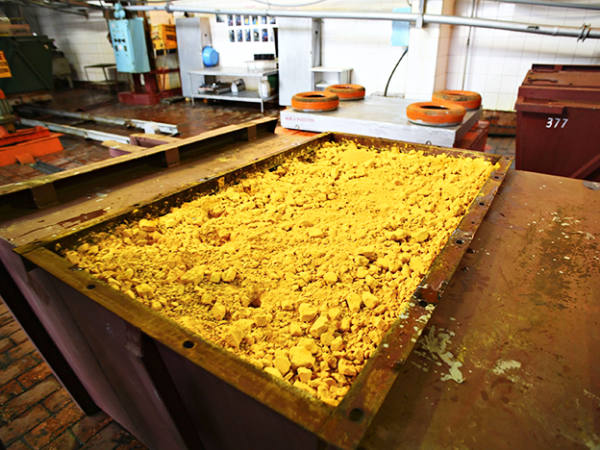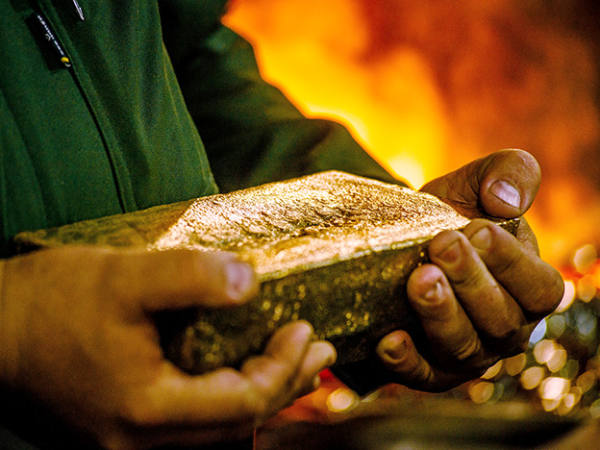Miners could fare better this year than many have been anticipating, despite global economic weakness, as Chinese demand at least holds metals prices stable. This would be excellent news for the major miners, most of which are in the midst of major capital programmes and already hurting due to rising costs.
HSBC economists cited improved Chinese demand and the global energy transition as two positive price levers. Looser monetary policy later in the year could also boost prices.
Of all the asset classes, commodities tend to have one of the most polarising effects. Yet, it’s difficult to understand why they generate such disparate and apparently heartfelt viewpoints.
At any rate, if you’re investing in publicly traded mining stocks, as opposed to derivatives, you would do well to place greater emphasis on the long-term growth narrative. And it’s worth remembering that investment returns for mining companies can outpace those of the underlying commodity due to operational gearing – the effect being that the percentage change in trading profits is often higher than the percentage change in sales. Unfortunately, the reverse also applies, so investors need to stretch their horizons and keep an eye out for factors that alter supply and demand fundamentals.
Transition time
If we go back a decade, about the same time the US Federal Reserve was pondering whether to end the massive bond-buying programme it initiated in response to the 2007-09 financial crisis, around 50,000 plug-in vehicles were sold in the European Union (EU), equivalent to 0.4 per cent of all cars. By last October, the market share of battery-electric cars rose to 14.2 per cent, up from 12 per cent in the same month in 2022. Admittedly, rates of adoption differed appreciably across the trading bloc due to factors ranging from the removal of government incentives to the inadequate roll-out of charging infrastructure. But that's what happens when you artificially mandate a market.
Nonetheless, the mining industry has recalibrated its assumptions regarding the future supply/demand balance of metals such as copper, nickel and lithium – also a key determination for investors. And if matters weren’t complicated enough already, the industry is under pressure from governments and institutional investors to reduce greenhouse gas emissions. There is a certain irony in all of this given that the achievement of net zero will rely on an unprecedented expansion of the production of certain key elements, most notably copper. Electric vehicles (EVs) utilise more than twice as much copper as cars powered by internal combustion engines. Analysis from Bernstein suggests that copper demand for use in EVs alone could increase ninefold through to 2040, equivalent to one-third of current total global demand. Furthermore, miles of copper wiring will be needed to upgrade and expand power grids across the globe, to say nothing of the additional tonnage required to connect wind and solar facilities to existing infrastructure.
Estimates from the US Geological Survey suggest that global copper reserves would be able to meet 31 years of continuing demand given current levels, although the global copper resource (copper that exists in both discovered and undiscovered deposits) could be six times as large. Naturally, a proportion of any resource – discovered or otherwise – could be rendered uneconomical based on its specific ore grade.
Indeed, the issue of mining grades is not only fundamental to the economics of the energy transition but also to the future of the sector itself. According to analysts from McKinsey & Company, the energy transition will see annual copper demand increase to 36.6mn tonnes by 2031. That represents a 31 per cent increase from current levels, but the analysts point to an estimated 6.5mn-tonne shortfall after taking into consideration probable projects and recycled production.
And matters are far from assured on that last point, as governments around the world have been restricting the cross-border trade in scrap materials, including several grades of copper-bearing material. This matters because over the past decade, around a third of global copper demand was met through recycled material. These restrictions have been linked to resource nationalism but, again, it’s ironic that the introduction of regulatory hurdles that could seriously hamper the push towards net zero has been undertaken with environmental stewardship in mind – at least on the face of it.
Declining head grades
Research from S&P Global Market Intelligence indicates that the head grade for copper has dropped by 7.6 per cent since 2010, although it is noted that new high-grade operations in the Democratic Republic of the Congo stalled this decline in 2022. The fall may seem small on paper – 0.54 per cent in 2012 to 0.50 per cent in 2022 – but that means much more throughput of ore is needed. BHP (BHP) mined 454mn tonnes of rock at Escondida in the 2022 financial year, put 134mn tonnes through the concentrator plant, and produced 836,000 tonnes of copper there from the mill, at a grade of 0.78 per cent. More copper came through leaching, taking the total up to 1mn tonnes.
The McKinsey analysis also pointed to grades as a mainstream mining reality: “the trend of declining copper head grades is well established and unlikely to be reversed”. In addition, it states that oxide ore bodies, which require less capital-intensive production modes, are being steadily exhausted.
In response, improved recoveries are needed to get adequate copper from orebodies. Essentially, this technical approach builds production capacity through the initial rejection of waste or unwanted material, increasing the grade of the ore in the process. It is also thought that machine learning could have a significant bearing on production optimisation as mechanisation increases across the mining industry.
Naturally, there is always a trade-off between increased capital demands and net earnings, but short of the discovery of any new mega-scale orebodies, it is difficult to imagine that demand won’t rapidly outstrip supply with all the attendant implications for global pricing. Bernstein analysts Bob Brackett and Angus Poland see the market slipping into supply deficit by 2027. And even in the unlikely event that half of the probable and possible projects are sanctioned and quickly brought into production, a deficit would still probably open up three years later.
It is difficult to imagine a scenario in which copper prices flatline or go into negative territory over the long term. Yet in 2024, price levers remain bound up with macroeconomic trends, a point borne out by the three-year performance of S&P GSCI Copper, as slowing economic growth and the increased cost of borrowing combined to dampen valuations. The index has delivered a modest 3.19 per cent annualised return over the past three years as a result. The correlation between the copper price and gross domestic product is widely recognised, but we are likely to witness much greater volatility if the ore goes into supply deficit and stays there. However, the long-term trajectory of copper pricing is certainly supported by market fundamentals.
Then there are the geopolitical implications to take on board. Copper, by any definition, should now be considered a strategic mineral. Last year, the US Department of Energy (DoE) officially added the metal to its list of “critical raw materials”. Part of the issue is that production is even more concentrated than fossil fuels, although perhaps not to the same degree as rare earths – a related topic. Consider that the two leading producers – Chile and Peru – account for nearly 40 per cent of global production, so it’s not difficult to appreciate why an expanding supply-side deficit could have material implications for international security. Both countries' governments have sent copper prices climbing in the past two years. In Chile it was through the expectation of higher taxes and in Peru the chaos of former president Pedro Castillo was enough to shake the market.
The world’s biggest mining groups, including the likes of Rio Tinto (RIO) and Freeport-McMoRan (US: FCX), have been stepping up production of copper and targeting M&A as a means of rapidly expanding reserves. Investors should take note. By their very nature, commodity prices tend to wax and wane, but given the potential price dynamics, it would make sense to gain increased exposure to the metal as we move – somewhat haltingly – towards an electrified future.













